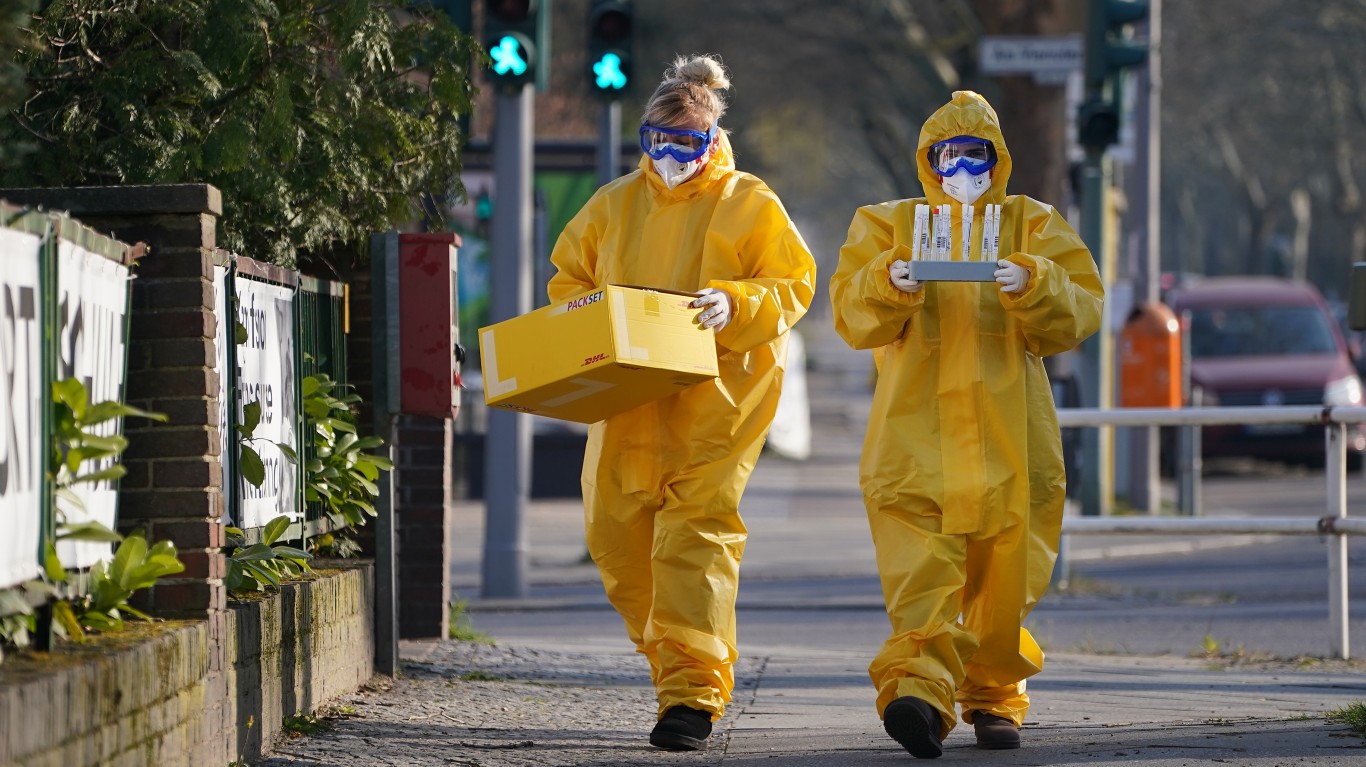

The COVID-19 pandemic has reached every corner of the globe, becoming the first viral scourge of the 21st century and threatening to rival the worst outbreaks of all time. And although almost every country practices such measures to combat the spread of the novel coronavirus, such as social distancing and self-isolation, strategies to address the pandemic vary from nation to nation.
24/7 Tempo is looking at the different approaches taken by other countries where the spread of the novel coronavirus is either slowing down or didn’t reach pandemic levels seen elsewhere in the world to flatten the curve. “Flattening the curve” is an epidemiological term meaning to slow the spread of the virus so that fewer people would contract the virus and would need to be treated, with the aim not to overwhelm health care systems.
Some countries have used extensive and early testing as well as vigorous use of data to try and get ahead of the virus. They acted quickly to address the growing crisis by closing all schools, public buildings, as well as shutting down borders and banning all travelers from China. Other nations have taken a less strict approach, even allowing restaurants to remain open.
The outbreak of the novel coronavirus has disrupted people’s lives in unparalleled ways, shuttering businesses, laying off millions of workers, and forcing much of the world to self-isolate at home. Social distancing guidelines are being expended in many countries, in some countries well into May. Staying inside for weeks at a time can be challenging. Here are 25 ideas about what you can do right now to make staying at home easier.
Click here to see what countries with some success against the coronavirus are doing
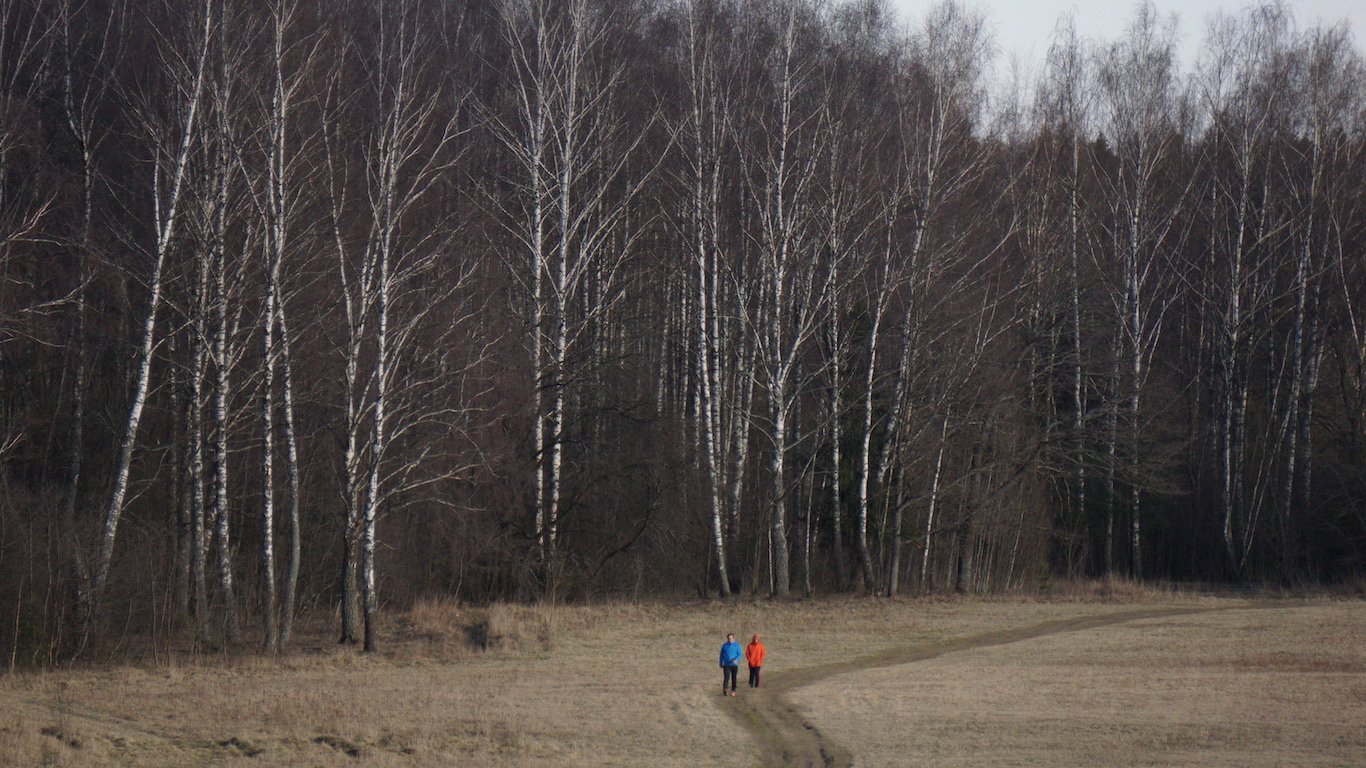
Russia
> Measure: Shutting border with China
> COVID-19 confirmed cases: 18,328
> COVID-19 related deaths: 148
> Population: 145.2 million
For a country of about 145 million people, Russia has had relatively few confirmed COVID-19 cases — more than 18,300 cases as of April 13. This is about as many as in the Scandinavian region, which comprises Denmark, Sweden, and Finland, and has a population of about 21 million. Russia took drastic steps to prevent the spread, such as shutting down its 2,600-mile border with China as early as Jan. 30.
Russia started testing widely for the coronavirus, isolating suspected cases, urging physical distancing, and tracing people who may have been in contact with infected people, also as early as January. Arriving passengers from hotspots such as China or Iran were tested at airports regardless of whether they exhibited any symptoms in February.
Now, all international flights have been grounded. In Moscow, the worst affected area, all nonessential business and activity, car-sharing services, and construction works were suspended as of April 13. Long-distance rail travel for World War II veterans, which is free, has also been halted starting April 13 to encourage older people to stay home.
[in-text-ad]

Germany
> Measure: A lot of testing done early
> COVID-19 confirmed cases: 123,016
> COVID-19 related deaths: 2,799
> Population: 83.2 million
Germany’s case fatality rate from COVID-19 of just about 2% is far lower than in many other countries. As of April 14, the country of about 83 million people had 123,016 confirmed COVID-19 cases and 2,799 deaths. In comparison, nearby Italy and Spain’s case fatality rates are about 13% and 10%, respectively.
Germany was quick to track all the people that the first confirmed sick person had come in contact with and quarantine them. The country also banned all travel to China and even closed a Chinese factory in Bavaria to contain the outbreak. The same steps were taken in other parts of Germany. Visits to elederly people in homes were stopped early on.
Germany started testing people — more than in other European countries — as soon as the first COVID-19 cases were confirmed. This allowed for early detection of possible outbreaks within the country.
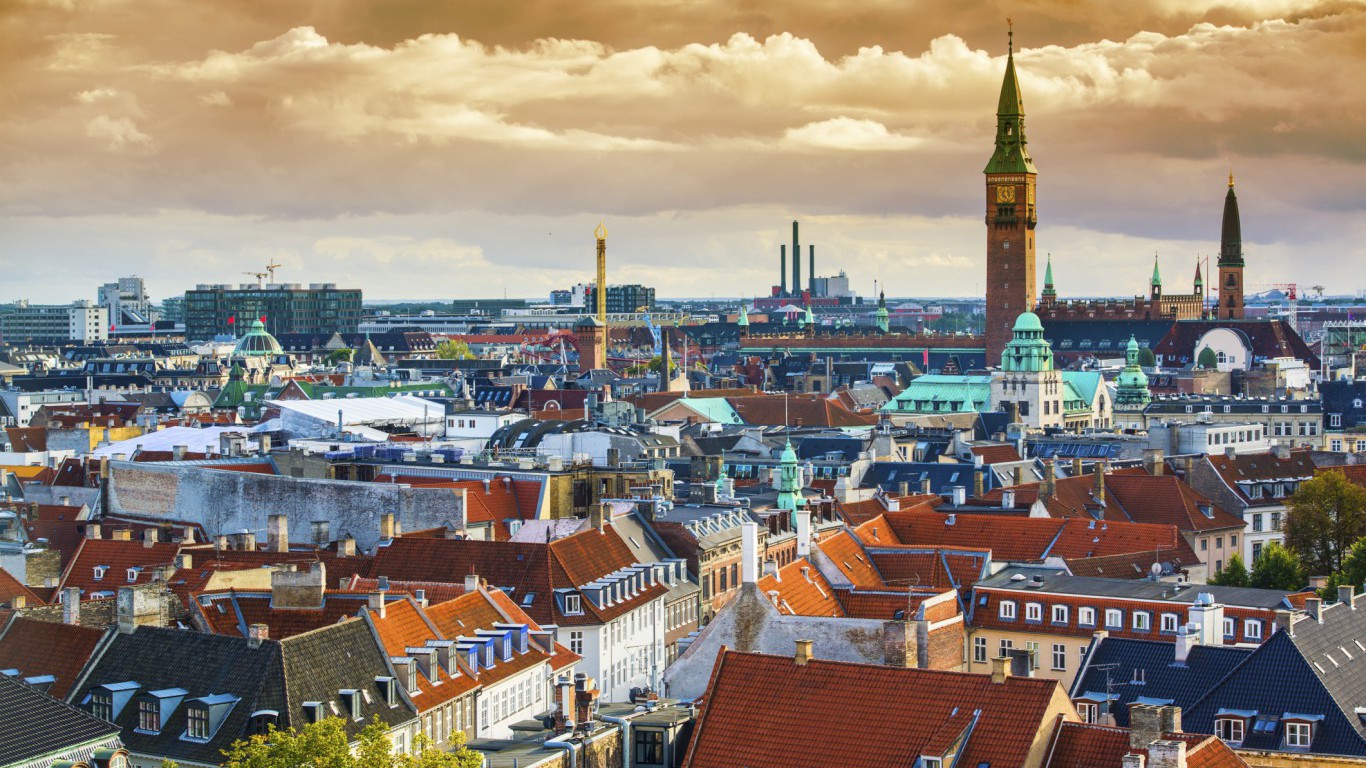
Denmark
> Measure: Early full closure of institutions and shutting borders
> COVID-19 confirmed cases: 6,318
> COVID-19 related deaths: 285
> Population: 5.8 million
Denmark took swift action to address the spread of COVID-19. On March 11, the Danes limited assembly to no more than 10 people, shuttered libraries, schools, gyms, salons, and restaurants. Denmark was also one of the first European countries to close all of its public schools and its border, doing so on March 14. The Scandinavian nation banned all festivals until September.
Denmark’s Prime Minister Mette Fredericksen credited her nation’s success to fighting the outbreak with its willingness to unite to address the crisis, including practicing self-isolation. Danes approve of the government’s handling of the crisis, with 86% supporting Denmark’s measures, according to one poll. Most restrictions will remain in place until May 10, when the government is set to take another look at the protocols in place.
Sweden
> Measure: Limit gatherings to 50 people, voluntary measures
> COVID-19 confirmed cases: 10,483
> COVID-19 related deaths: 899
> Population: 10.1 million
Sweden has a unique approach. The country has largely stayed open for business since the pandemic began and emphasized self-restraint and individual responsibility, an approach that contrasts with other nations’ approach of strict lockdowns. One of the reasons for Sweden’s hands-off approach is that its constitution does not permit government officials to become deeply involved with administrative officials such as health care authorities. The nation also has a high level of trust in its institutions.
The Scandinavian country closed high schools and universities but kept grade schools, pubs and restaurants open. Its border, too, remained open. The nation’s health officials emphasized hand-washing, physical distancing, and protecting those over the age of 70.
The country avoided a mass outbreak when many other countries were struggling, and some still are, to contain the pandemic. Lately, however, Sweden is seeing an increase in fatality rate and the government warned thousands more may die.
[in-text-ad-2]

Australia
> Measure: No gatherings of more than 2 people
> COVID-19 confirmed cases: 6,359
> COVID-19 related deaths: 61
> Population: 20 million
The growth in COVID-19 cases in Australia has already slowed, but physical distancing rules remain in place to prevent a surge of new coronavirus cases. As of April 13, there were 6,359 confirmed COVID-19 cases and 61 deaths. This is a fatality rate of barely 1%. On March 30, the government reported that the growth rate of new infections had slowed to an average of 9% over the past three days from about 30% a week earlier.
Strict physical distancing rules were put into place, including no public meetings of more than two people, and the rules are enforced. Those found to have broken the rules may have to pay a hefty fine and / or face jail time. State borders, cruise ports, cafes, clubs, parks, and gyms have been closed.
Even though the curve has begun to flatten in Australia, the government is not ending the lockdown yet. Restrictions may ease over time, including reopening of some businesses, but that will likely not happen for at least a few more weeks.
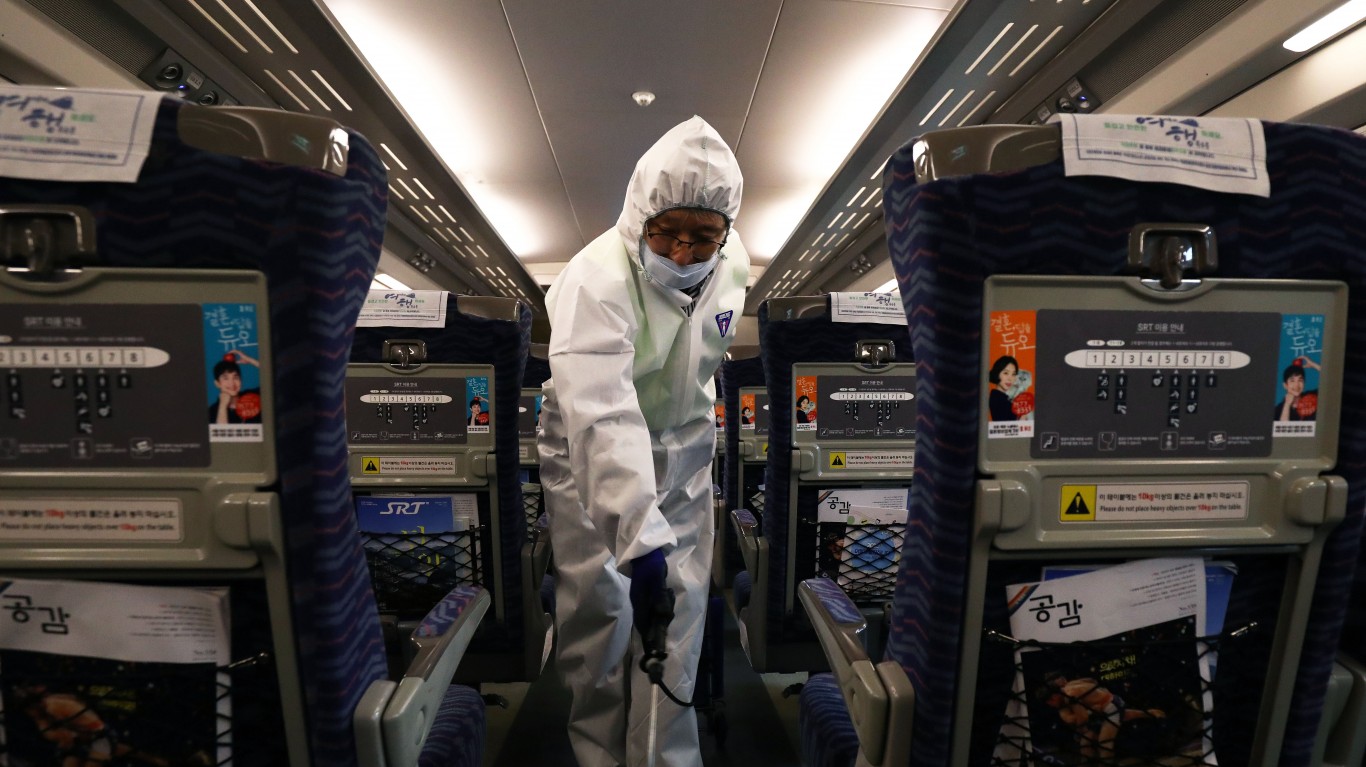
South Korea
> Measure: Testing widely for the virus
> COVID-19 confirmed cases: 10,537
> COVID-19 related deaths: 217
> Population: 51.7 million
As of this week, it appears that South Korea has flattened the curve. The country reported over 10,500 confirmed COVID-19 cases, among the top 20 countries for total cases. The peak appears to have been on Feb. 29, when more than 900 new cases were identified. On March 5, there were 438 new cases. On April 13, just 25 new confirmed cases were reported.
South Korea appears to have reined in the outbreak without some of the strict lockdown strategies put in place by other countries. There has been no full lockdown imposed in any city, but people took social distancing guidelines and recommendations for self-isolation seriously.
South Korea was quick to start massive testing of people — even those who had no symptoms but had traveled to Wuhan, China, where the virus originated. It had also tracked the people someone who had tested positive had been in contact with. Health officials quickly urged private companies to start developing coronavirus test kits for mass production, all but guaranteeing emergency approval of the kits.
Despite its success, South Korea appears to now be fighting another coronavirus battle. An increasing number recovered patients have tested positive again. The cause of relapses is still not clear.
[in-text-ad]

Singapore
> Measure: Isolating, quarantining cases, contact tracing
> COVID-19 confirmed cases: 2,532
> COVID-19 related deaths: 8
> Population: 5.6 million
Singapore was the worst hit country outside of China two months after the new coronavirus was detected in China. Another two months later and the country is often cited as an example of how to handle a pandemic. As of April 13, there were 2,532 confirmed COVID-19 cases in Singapore and eight deaths. The country has learned its lesson from fighting the SARS outbreak in 2002-2003.
This time, COVID-19 patients were not allowed to self-isolate at home even if they had mild symptoms, thus preventing family members from catching it. Contact tracing has been implemented aggressively. A law was passed after the SARS outbreak allowing officials to use an app to trace the footsteps of citizens who test positive for an emerging infectious disease. The app, called TraceTogether, has been used to identify people who have been exposed to patients infected with the coronavirus.
Another effective measure Singapore took was closing its borders for people coming from China just a week after Chinese authorities announced they would lock down Wuhan. Singapore later expanded its travel restrictions, shutting down its borders to all short-term visitors, even those just transiting through.
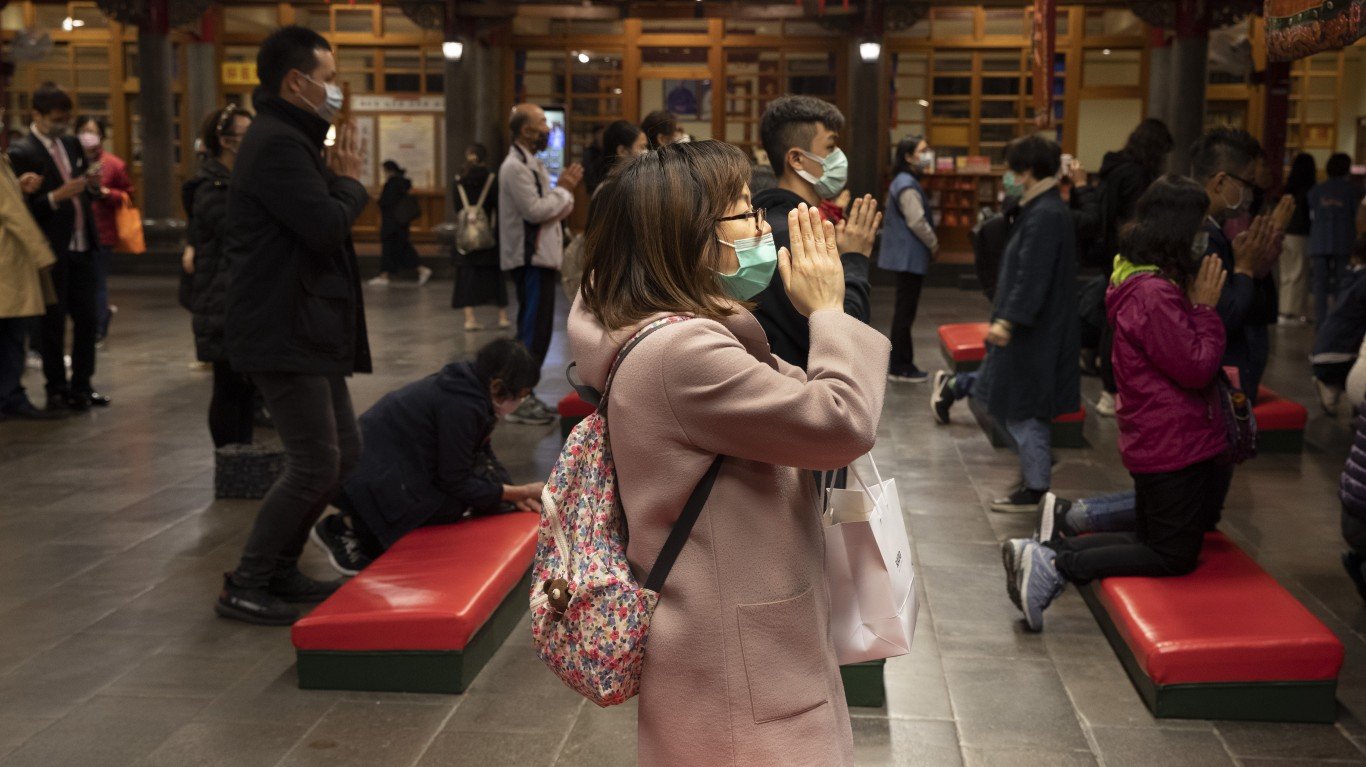
Taiwan
> Measure: Early strict measure to quarantine possible cases
> COVID-19 confirmed cases: 393
> COVID-19 related deaths: 6
> Population: 23.8 million
Taiwan was prepared for the coronavirus based on its experience with the SARS outbreak in 2003. At that time, more than 70 Taiwanese died directly or indirectly from the disease that originated in China. After the SARS outbreak, Taiwan established the National Health Command Center (NHCC). Taiwan improved infection testing and training at its medical centers and put in place protocols for quarantine. The nation also developed a coordinated response among the nation’s health officials to gather data and probe cases involving infectious diseases.
The island nation of more than 23 million people used data pertaining to the virus and acted quickly to address the pandemic. When China notified the World Health Organization about cases of unknown pneumonia, Taiwenese officials acted swiftly, boarding planes from China to check passengers for fever and symptoms of pneumonia before allowing passengers to deplane.
When China announced on Jan. 20 that the virus could be transmitted between people, Taiwan banned those from Wuhan from entering the island. People returning to Taiwan from virus hotspots in Europe and the United States were quarantined for 14 days. The government worked closely with phone companies to track cell phones of returnees and was prepared to levy hefty fines on those who violated the quarantine order.

Hong Kong
> Measure: Strictly enforced social distancing
> COVID-19 confirmed cases: 1,009
> COVID-19 related deaths: 4
> Population: 7.5 million
Hong Kong has employed a strategy of aggressive testing, isolating those who have become infected from the outbreak, and tracking the contacts of those who have been infected. The uninfected population has been urged to practice social distancing while trying to maintain as much of a normal life as possible as health officials keep a close watch on any resurgence of the virus. Hong Kong has among the highest testing per capita rates of any place in the world, according to health authorities. Quarantined people in Hong Kong are given electronic wristbands that link with smartphones and track their location. When there was a resurgence in confirmed cases in March, Hong Kong Chief Executive Carrie Lam on March 23 announced that non-residents would be barred from the territory, a semi-autonomous region of China, effective March 25.
Hong Kong, which has few land borders, is able to shut down travel quickly. It developed rapid response protocols following its experience with the SARS outbreak from China in 2003. On Dec. 31, when China first reported the novel coronavirus to the World Health Organization, Hong Kong started temperature screenings at border points along its 19-mile border with China.
[in-text-ad-2]
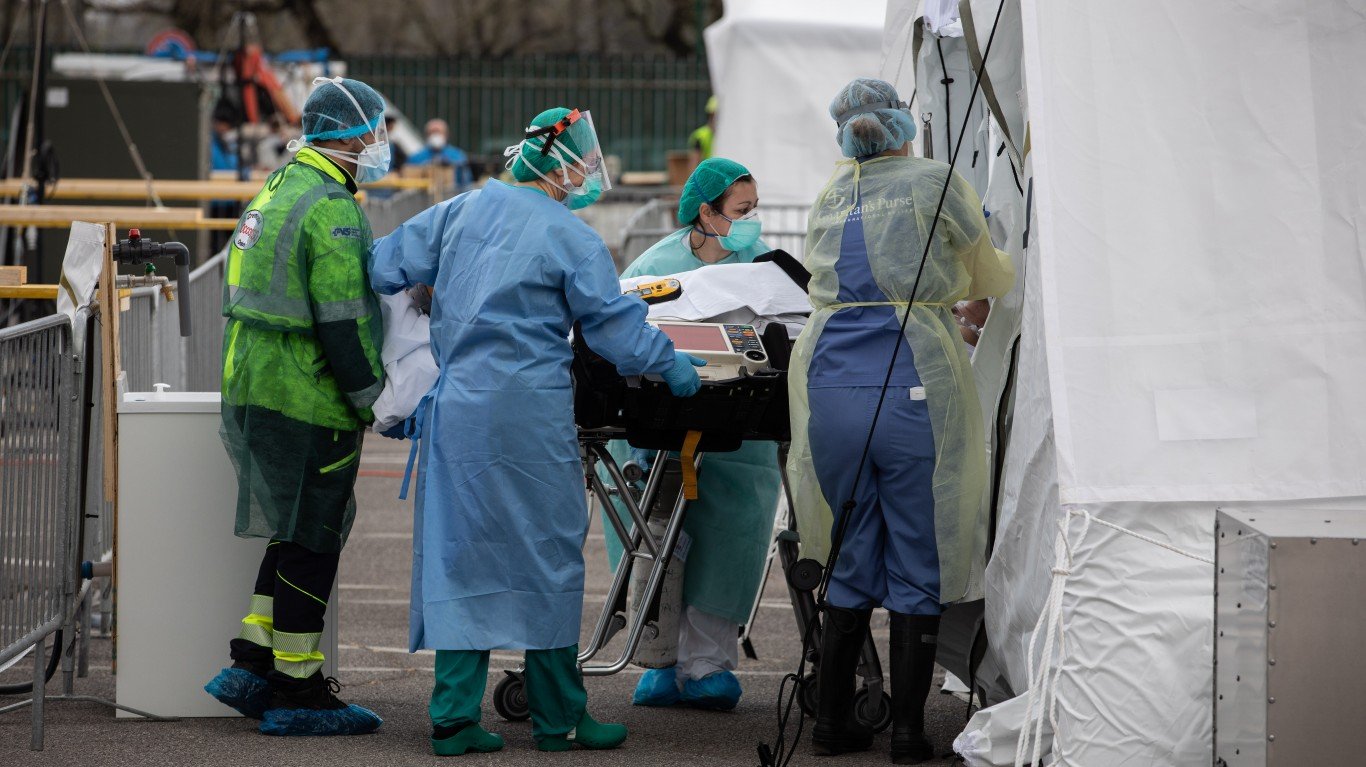
Italy
> Measure: Nationwide lockdown
> COVID-19 confirmed cases: 156,363
> COVID-19 related deaths: 19,899
> Population: 60.3 million
Italy, one of the world’s worst-hit nations from the COVID-19 pandemic, appears to be finally flattening the curve. To fight the spread of the disease, Italy implemented an unprecedented national lockdown, which was ordered by Prime Minister Giuseppe Conte on March 10 and banned nonessential travel. Police set up checkpoints around the country to enforce the order.
Data indicated that the measure was finally beginning to work. From March 31 to April 1, total COVID-19 cases in Italy increased by 4.5%, in contrast to a 12.6% surge between March 16-17. Since Italy was the first nation in the West to struggle with a severe outbreak, and the first to employ a lockdown, the world is watching to see when Italy will begin to reopen. At a recent news conference, Conte urged caution. “If we started to loosen the measures, all our efforts made so far would have been in vain,” he said.

Iceland
> Measure: Large-scale testing
> COVID-19 confirmed cases: 1,701
> COVID-19 related deaths: 8
> Population: 352,000
Iceland is testing people for COVID-19 on a very large scale. Even people who are showing no symptoms are able to get tested. By the beginning of April, the island nation has tested more of its population for the novel coronavirus than any other country, according to online statistics site Worldometer.
Screening the general population increases the possibility of catching the infection early in people before they start showing symptoms or catching people who are infected and remain asymptomatic. The infected people can then self-isolate, helping to stop the spread of the pandemic. The country reported its first COVID-19 confirmed case on Feb. 28, 2020. As of April 13, there were 1,701 cases.
Perhaps because of its ability to test people, Iceland has not implemented the strict social distancing rules seen elsewhere in the world. Primary schools and daycare centers remain open. Restaurants can also stay open, though they have to provide limited seating. Travel is not banned, and tourists are not required to self-quarantine. However, gatherings are limited to no more than 20 people.
[in-text-ad]

Ireland
> Measure: Public facilities closed, work from home
> COVID-19 confirmed cases: 9,655
> COVID-19 related deaths: 334
> Population: 4.9 million
Already on March 31, Ireland reported a drop in the growth of new COVID-19 confirmed cases. Schools, colleges, and other public facilities have been closed since March 12. All pubs have been closed, too. People were asked to stay at home as much as possible and only leave if they were essential workers, to go food shopping, to exercise, or to care for sick people. Gatherings of more than four people were banned. All nonessential travel within the country was banned as well.
Ireland’s number of COVID-19-related deaths per 100,000 people is somewhat lower than that of neighboring Great Britain, but the reported rate of infection in Ireland is slightly higher. Even though the average daily case growth has fallen to 9% on April 10 from 15% the week before, the lockdown has been extended until May 5. Even then, restrictions will be lifted one by one, not all at the same time.
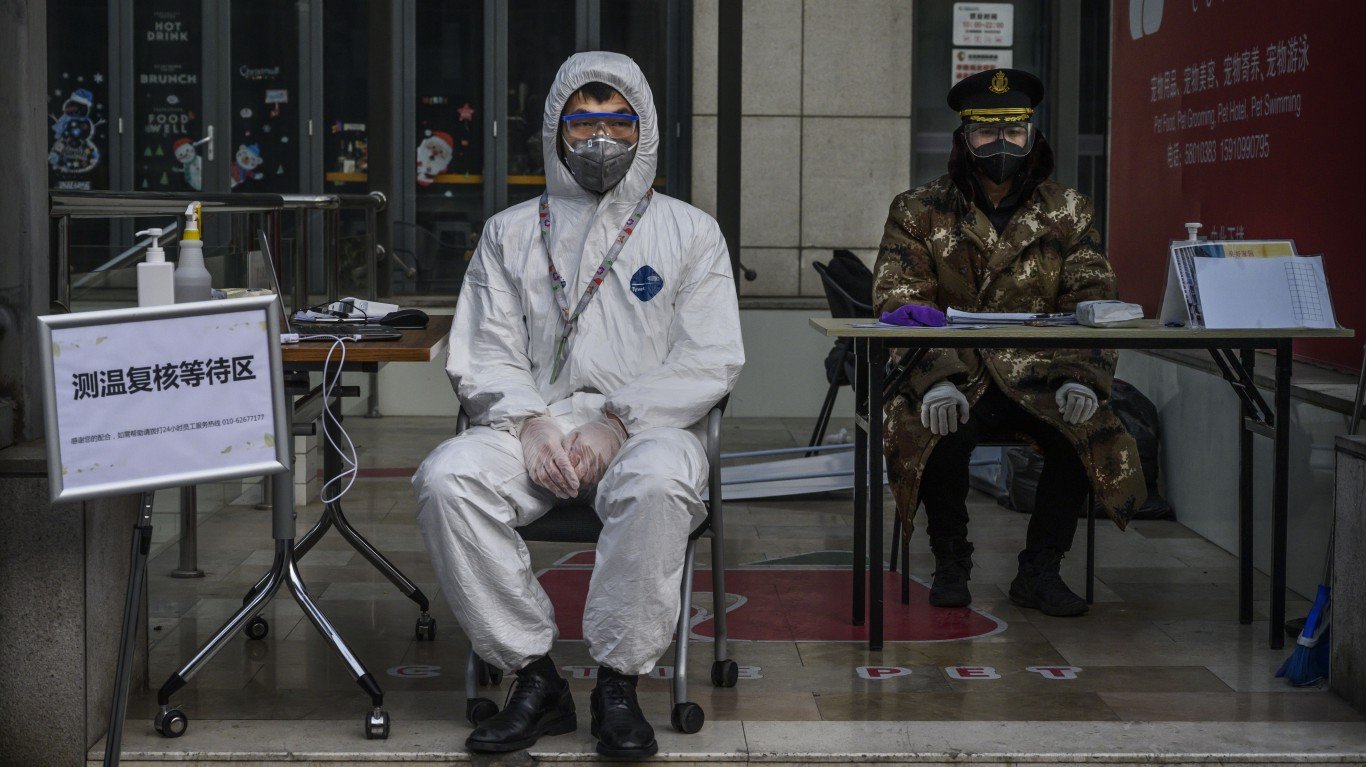
China
> Measure: Extreme lockdowns
> COVID-19 confirmed cases: 84,535
> COVID-19 related deaths: 3,341
> Population: 1.3 billion
China took what was considered at the time the extraordinary measure of shutting down Wuhan, where the coronavirus orginated, on Jan. 23. Transportation in and out of the city of 11 million people was shut down with no exceptions. Schools and shops were closed indefinitely, and private cars and public transport was halted. In some sections of the city, residents were forbidden from leaving their homes. In some cases, officials went door to door to check for those who might be infected, forcing those who are to isolate, measures the West would consider draconian. Guards posted at residential buildings monitored the temperatures of people attempting to enter the building. Eventually the lockdown in China involved other cities, amounting to about 760 million people by one analysis.
Chinese authorities aggressively imposed quarantines and converted large venues such as stadiums into quarantine areas and converted many of these facilities into temporary hospitals.
Essential Tips for Investing: Sponsored
A financial advisor can help you understand the advantages and disadvantages of investment properties. Finding a qualified financial advisor doesn’t have to be hard. SmartAsset’s free tool matches you with up to three financial advisors who serve your area, and you can interview your advisor matches at no cost to decide which one is right for you. If you’re ready to find an advisor who can help you achieve your financial goals, get started now.
Investing in real estate can diversify your portfolio. But expanding your horizons may add additional costs. If you’re an investor looking to minimize expenses, consider checking out online brokerages. They often offer low investment fees, helping you maximize your profit.
Thank you for reading! Have some feedback for us?
Contact the 24/7 Wall St. editorial team.
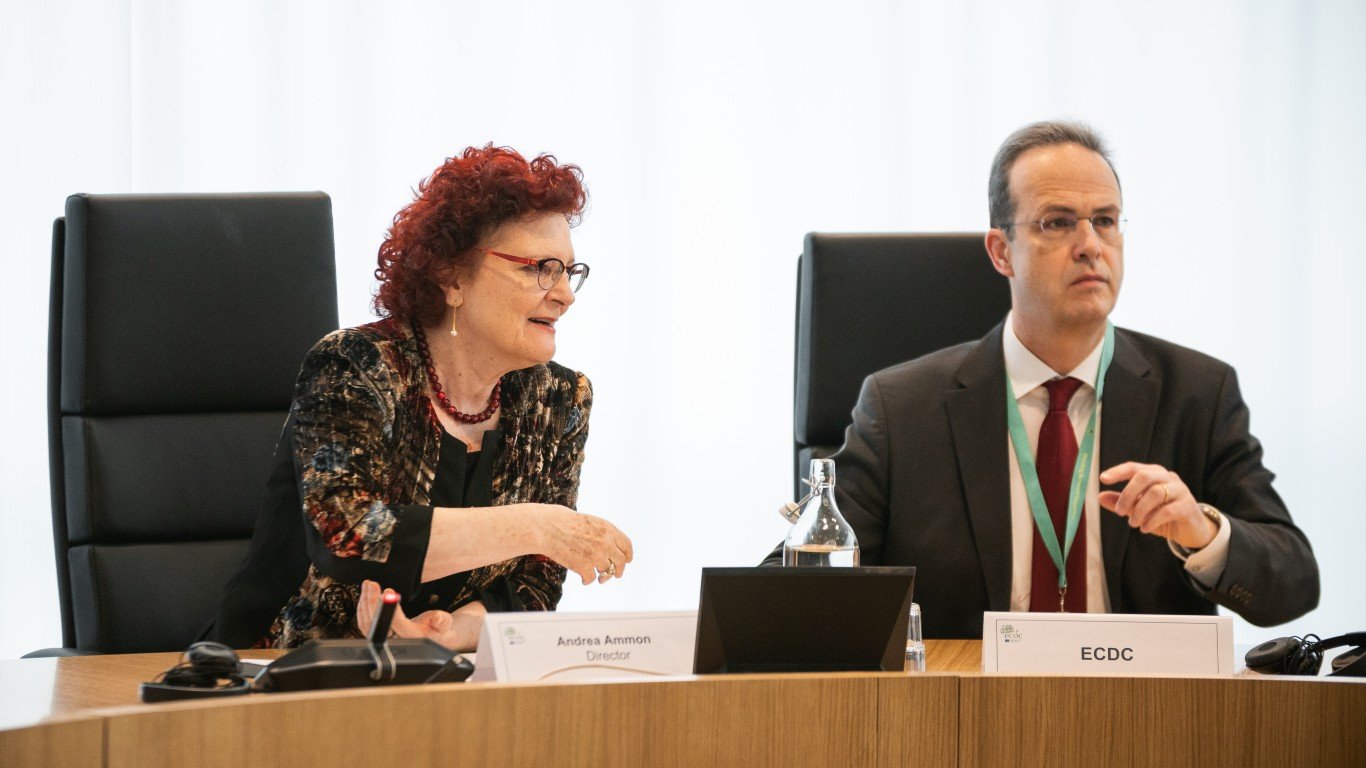
 24/7 Wall St.
24/7 Wall St.


